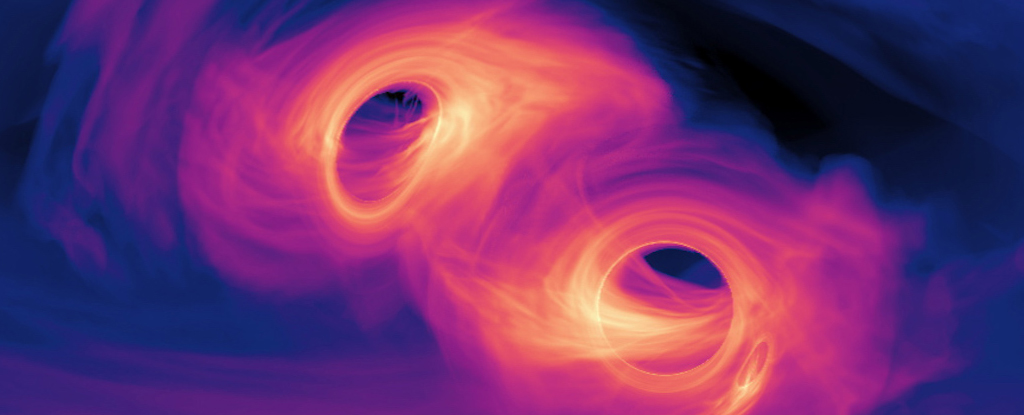Products You May Like
Nothing lasts forever, including black holes. Over immensely long periods of time, they evaporate, as will other large objects in the Universe. This is because of Hawking Radiation, named after Stephen Hawking, who developed the idea in the 1970s.
The problem is Hawking Radiation has never been reliably observed.
A trio of European researchers think they’ve found a way to see Hawking Radiation. Their work is in a paper titled “Measuring Hawking Radiation from Black Hole Morsels in Astrophysical Black Hole Mergers.”
Black hole mergers were predicted long ago but never observed. Theory showed that these mergers should release powerful gravitational waves. Finally, in 2015, the LIGO observatory detected the first merger.
Now, scientists have detected many of them.
In their brief research letter, the researchers say that these mergers are a window into Hawking Radiation (HR). When black holes merge, they may create so-called “morsel” black holes the size of asteroids that are ejected into space. Their small size should make their HR detectable.
The HR coming from these small BHs produces gamma rays with a particular “fingerprint” of high-energy photons.
“In this letter, we explore the observational consequences of the production of a large number of small BH morsels during a catastrophic event such as the merger of two astrophysical BHs,” the authors explain.
“As we shall show, the Hawking radiation stemming from these BH morsels gives rise to gamma-ray bursts (GRBs) possessing a distinctive fingerprint.”
When black hole morsels evaporate, they emit particles in a spherically symmetrical pattern. As long as the larger merged BH is not blocking their view, the HR particles should reach us. The photon energy from the bursts exceeds the trillion-electron volt (TeV) scale.
The researchers say that the energy level of the gamma-ray bursts from these morsel holes is detectable by atmospheric Cherenkov telescopes like the High-Altitude Water Cherenkov (HAWC) Gamma-ray observatory. HAWC observes photons in a range from 100 GeV to 100 TeV.
Many questions remain. The authors say that these morsel BHs will emit the most energy close to their time of evaporation. But when morsel BHs are emitted in the intense gravitational environment of a BH merger, their Hawking Radiation may be affected.
The same is true if the morsels are emitted at relativistic velocities. Both of those factors could alter their spectra before they reach our detectors.
There are points in the Standard Model of Particle Physics where things break down due to our lack of understanding. The authors point out that some new physics not observed before could also distort the spectra from morsel black holes, making them tricky to observe.
There’s another really interesting aspect to these asteroid-size morsel black holes. Since the physics in the very early Universe were different, it’s possible they were created then. If they were, and if they haven’t evaporated by now, they could constitute dark matter.
“The observation of Hawking radiation from BH morsels, therefore, could enlighten us not only about the production of such morsels but also about particle physics at energies beyond the reach of current and future collider experiments, carrying imprints from new physics based on supersymmetry, composite dynamics, or extra dimensions, to name a few,” the authors write.
This article was originally published by Universe Today. Read the original article.
